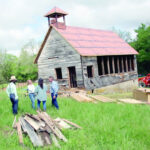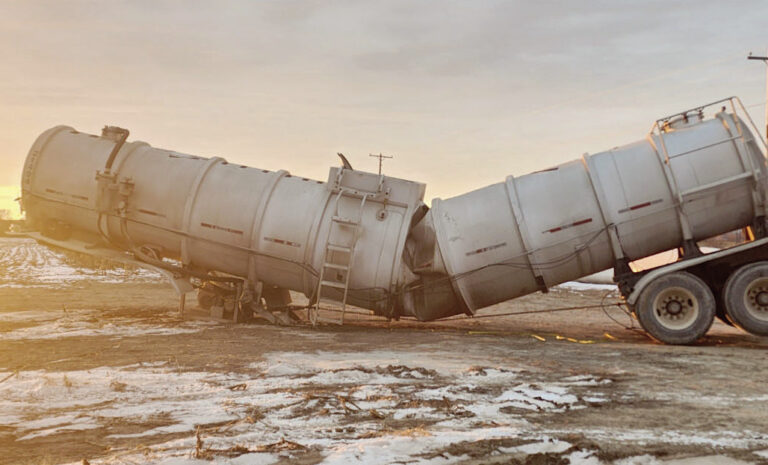By Sheila Harris sheilaharrisads@gmail.com
Landowners in Barry and surrounding counties are beginning to take note of wastewater residuals being land-applied as free fertilizer in Barry and surrounding southwest Missouri counties.
Many have expressed concerns, both to the Cassville Democrat and to Cassville City Administrator Steve Walensky, who also raises livestock on his farm east of town.
“I get calls and emails every week from people who are worried about what’s happening,” Walensky said.
The Missouri Fertilizer Control Board (MoFCB) has issued fertilizer permits to Maryland-based Synagro and Arkansas-based Denali Water Solutions in conjunction with their business contractors (jointly numbering 112) to land-apply the waste on Missouri land. Most of the businesses with whom they contract operate out of state.
In addition to land-application, Denali also maintains two 2 million-gallon storage lagoons on private land: one in Newton County and one in McDonald County.
In a statement to the Cassville Democrat last week, Michele Helton, Director of Environmental for Denali’s Central Region, said “the storage lagoons are reserved for organic residuals from food processing, where they are held until weather conditions are right for land application, and in an effort to reduce odors.” Although odors from the land-application of wastewater residuals are oppressive, of equal concern to residents is the question of how the application of industrial waste will affect Barry County’s ground and surface waters.
An EPA waterbody study released in 2020 shows the entirety of Table Rock Lake is already nutrient-impaired by algae, nitrogen and phosphorus, beginning at Eagle Rock in Barry County, and north of Cape Fair where Flat Creek joins Table Rock in Stone County.
While nitrogen and phosphorus — a necessity for the life cycle of a plant — don’t sound menacing, when present in excess, they deplete oxygen from water sources, which can be detrimental to fish, wildlife and humans, especially infants and other vulnerable individuals.
Retired Research Soil Analyst Bob Lerch, who has been working on a volunteer basis with the Cave Research Foundation in Barry County, said the land-application of wastewater residuals is not all bad.
“If they are applied at a sustainable rate, they can be beneficial as fertilizer and soil amendments to build carbon,” Lerch said. “The devil is in the detail [though]. [The big questions are], ‘How effective are [poultry- processing] lagoons for treating poultry waste,’ and, ‘Are the wastewater residuals being applied at rates that won’t harm the environment?’
“Poultry processors typically treat residuals by creating anaerobic conditions in the bottom of their lagoons. The sludge or bio-solids are then dredged from the bottom of the lagoons and land-applied as fertilizer when more space is needed in the lagoons.”
According to Lerch, lagoons vary in their effectiveness, as do the properties of the resulting wastewater residuals.
“Wastewater residuals contain nitrogen, phosphorus, pathogens and veterinary antibiotics in highly variable concentrations, depending on the effectiveness of [wastewater] treatment,” he said.
Lerch said a one-sizefits- all approach is not appropriate for wastewater residuals. Different application rates should be used depending on the use of the field, its slope and its soil content.
According to Missouri Department of Natural Resources (DNR) Fact Sheet PUB3049, the recommended design hydraulic application rate for liquid fertilizer is 1.6” per day or 3” per week, with exceptions depending on the nutrient content of the soil and the nutrient needs of intended crops and yields.
Helton said Denali works closely with state agencies to adhere to each state’s requirements for land application of organic residuals, including soil and fertilizer sampling and application setbacks.
“Denali currently provides products to farmers in over 28 counties in Arkansas [as well as other states],” she said. “The volume of residuals managed for Denali customers in any given region is highly variable based on [a facility’s] production, schedule, processing requirements and the distance to [farms with demand] and available storage when needed.”
Again, the devil is in the details.
Arkansas has a total of 75 counties. The northwestern counties, as well as the top portion of Carroll County, where Tyson Foods in Berryville and Green Forest are located, were designated as “Nutrient Surplus Areas (NSAs)” by the Arkansas General Assembly in 2003. This was due to an excess of nitrogen and phosphorus in the soil – the result, they say, of poultry processing. The designation of NSA remains in effect to this day. Commercial entities desiring to land-apply fertilizer in an NSA in Arkansas must jump through multiple costly and time-consuming hoops in order to do so.
There are no such stringent requirements in place in southwest Missouri counties, where poultry production is equally prolific, where the entirety of Table Rock Lake is known to be nutrient impaired and where the condition of some of its waterways are unknown.
In addition to the designation of northwestern Arkansas counties as NSAs, as set by the Arkansas Department of Agriculture, the going tonnage fee for selling and distributing fertilizer in the state of Arkansas is $2.40 per ton. Reports from distributors are required monthly, and steep penalties — which grow by the week — are imposed upon late-reporters.
In Missouri, tonnage fees for fertilizer distribution, as established by the Missouri Fertilizer Law and enforced by the Missouri Fertilizer Control Board, are .60 cents per ton. Reports are required semi-annually.
In addition to the benefits of lower operating costs in Missouri, out-ofstate waste distributors also benefit from the lack of oversight by the DNR unless obvious surface run-off from fertilizer applications occur.
“When a business acquires a fertilizer permit from the MoFCB, they’re exempt from the requirement for a land-application permit from the DNR, even in areas that are already nutrient impaired,” said Heather Peters, with the Watershed Protection Section of the DNR, in an early 2022 statement.
Surface run-off from the excess application of fertilizer is not the only concern in Barry County. Karst geography allows surface applications to seep through the multiple fissures, sinkholes and underground streams and reach the groundwater below — the source of drinking water for the municipalities and private landowners in the county.
Lerch said nitrates can enter groundwater from above, with no obvious sign of surface run-off.
In Barry County, the tourism industry could ultimately be affected.
The extent of Roaring River’s recharge basin has yet to be determined. Lerch has been assisting hydrologist Ben Miller in performing dye-tracing tests for that purpose. Although a slow process, test results in late 2021 showed that Roaring River’s recharge area reached as far northwest as Wayne, a few miles south of Exeter.
“If a tanker wrecked north of Washburn on Highway 37, any resulting chemical spill would reach Roaring River Spring,” Lerch and Miller said, during a September 2021 interview.
Two Denali tanker spills — one alleged, one a matter of official record — have occurred in Barry County since Dec. 24, 2022.
The alleged spill occurred on private land northeast of Washburn on Dec. 24, in an area known to be part of Roaring River Spring’s recharge basin.
The incident was recently brought to the attention of Barry County director of Emergency Management Services David Compton. A supporting photo, taken from a roadway, shows a ruptured tanker sitting in a partially snow-covered field.
Gayle Orner, a member of the KISS Rebreathers team exploring Roaring River Spring, holds a Ph.D. in Toxicology and utilized rainbow trout as a model to study environmental causes of cancer in humans.
“Trout only thrive in the purest of water. Missouri is blessed with cold, pure springs that, in addition to their beauty, are the foundation for the very successful DNR hatchery system,” Orner said. “Excess nitrate levels, often the result of overfeeding and/or the use of systems with limited water exchange, have long been known to affect fish health, including decreased survival and slower growth.”
The potential adverse effects on the trout are not the only concern, Orner said.
“Trout and other aquatic species often serve as the ‘Canary in the Coal Mine,’ as an advance warning of [the presence of] contaminants that may affect human health,” she said. “Infants are particularly sensitive to the effects of nitrates. Levels above 10 mg/L can cause methemoglobinemia (aka Blue Baby Syndrome) a condition resulting from insufficient oxygen in the blood.”
High nitrate levels are also associated with birth defects, thyroid disease, and some cancers, Orner said.
A second Denali tanker spill occurred on Jan. 24. The Missouri State Highway Patrol reported the tractor wreck; the accompanying tanker spill was not mentioned. The westbound 2015 Mack Pinnacle slid off snow-covered Missouri Highway 76, near Lohmer tower, and overturned. The wreck resulted in minor injuries to the driver and extensive damage to the truck.
The trailer, believed to be full with poultry- processing wastewater residuals from Tyson Foods in Green Forest, Ark., also turned over, spilling about twothirds of its 6,000-gallon load into the ditch, according to Compton, who was called to the scene by responders.
In addition to overseeing mitigation efforts, Compton drew a sample of the thick, muckish-brown, liquid residuals for lab analysis.
“I should have results from the lab in about two weeks,” Compton said.
“In the unfortunate event of an accident that results in a spill, Denali works with local and state emergency management officials and state environmental agencies to ensure all cleanup efforts meet or exceed their expectations,” Helton said.





